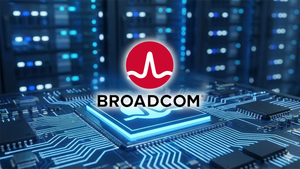Abbey Jenkins, President and Chief Executive Officer, to also participate in the panel “A record setting year for cell and gene therapies – how do we keep the momentum going?”
Gamida Cell Ltd. (Nasdaq: GMDA), a cell therapy pioneer working to turn cells into powerful therapeutics, today announced that Abbey Jenkins, President and Chief Executive Officer, will present its corporate highlights at the annual Cell & Gene Meeting on the Mesa to be held October 10-12 in Carlsbad, California, and livestreamed globally. Ms. Jenkins will also participate in a panel titled “A record setting year for cell and gene therapies – how do we keep the momentum going?” at the event.
During Gamida Cell’s corporate presentation, Ms. Jenkins will share commercial launch updates for Omisirge™ (omidubicel-onlv), the company's allogeneic stem cell therapy, and an overview of the market opportunity.
Organized by the Alliance for Regenerative Medicine, the Cell & Gene Meeting on the Mesa is an annual three-day conference featuring more than 100 presentations by companies highlighting technical and clinical achievements over the past 12 months in the areas of cell therapy, gene therapy, gene editing, tissue engineering and broader regenerative medicine technologies.
Virtual attendance is available and includes a livestream of Gamida Cell’s presentation and the ability to view all conference sessions on-demand. Please visit https://meetingonthemesa.com for more information.
The following are details regarding Gamida Cell’s presentation at the conference:
Date: Wednesday, October 11
Time: 4:45 – 5:00 p.m. PT
Location: Aseptic Technologies Ballroom, Park Hyatt Aviara Resort, 7100 Aviara Resort Dr., Carlsbad, CA 92011
The following are details regarding Ms. Jenkins’ panel participation at the conference:
Panel: A record setting year for cell and gene therapies – how do we keep the momentum going?
Date: Wednesday, October 11
Time: 3:15 – 4:15 p.m. PT
Location: Aseptic Technologies Ballroom, Park Hyatt Aviara Resort, 7100 Aviara Resort Dr., Carlsbad, CA 92011
Complimentary attendance at this event is available for credentialed investors and members of the media only. Investors should contact Savannah Bryant at sbryant@alliancerm.org and interested media should contact Stephen Majors at smajors@alliancerm.org.
Omisirge Indication
Omisirge is a nicotinamide modified allogeneic hematopoietic progenitor cell therapy derived from cord blood indicated for use in adults and pediatric patients 12 years and older with hematologic malignancies who are planned for umbilical cord blood transplantation following myeloablative conditioning to reduce the time to neutrophil recovery and the incidence of infection.
Important Safety Information for Omisirge
BOXED WARNING: INFUSION REACTIONS, GRAFT VERSUS HOST DISEASE, ENGRAFTMENT SYNDROME, AND GRAFT FAILURE
- Infusion reactions may be fatal. Monitor patients during infusion and discontinue for severe reactions. Use is contraindicated in patients with known allergy to dimethyl sulfoxide (DMSO), Dextran 40, gentamicin, human serum albumin or bovine material.
- Graft-versus-Host Disease may be fatal. Administration of immunosuppressive therapy may decrease the risk of GvHD.
- Engraftment syndrome may be fatal. Treat engraftment syndrome promptly with corticosteroids.
- Graft failure may be fatal. Monitor patients for laboratory evidence of hematopoietic recovery.
Contraindications
OMISIRGE is contraindicated in patients with known hypersensitivity to dimethyl sulfoxide (DMSO), Dextran 40, gentamicin, human serum albumin, or bovine products.
Warnings and Precautions
Hypersensitivity Reactions
Allergic reactions may occur with the infusion of OMISIRGE. Reactions include bronchospasm, wheezing, angioedema, pruritis and hives. Serious hypersensitivity reactions, including anaphylaxis, may be due to DMSO, residual gentamicin, Dextran 40, human serum albumin (HSA) and bovine material in OMISIRGE. OMISIRGE may contain residual antibiotics if the cord blood donor was exposed to antibiotics in utero. Patients with a history of allergic reactions to antibiotics should be monitored for allergic reactions following OMISIRGE administration.
Infusion Reactions
Infusion reactions occurred following OMISIRGE infusion, including hypertension, mucosal inflammation, dysphagia, dyspnea, vomiting, and gastrointestinal toxicity. Premedication with antipyretics, histamine antagonists, and corticosteroids may reduce the incidence and intensity of infusion reactions. In patients transplanted with OMISIRGE in clinical trials, 47% (55/117) patients had an infusion reaction of any severity. Grade 3-4 infusion reactions were reported in 15% (18/117) patients. Infusion reactions may begin within minutes of the start of infusion of OMISIRGE, although symptoms may continue to intensify and not peak for several hours after the completion of the infusion. Monitor patients for signs and symptoms of infusion reactions during and after OMISIRGE administration. When a reaction occurs, pause the infusion and institute supportive care as needed.
Graft-versus-Host Disease
Acute and chronic GvHD, including life-threatening and fatal cases, occurred following treatment with OMISIRGE. In patients transplanted with OMISIRGE Grade II-IV acute GvHD was reported in 58% (68/117). Grade III-IV acute GvHD was reported in 17% (20/117). Chronic GvHD occurred in 35% (41/117) of patients. Acute GvHD manifests as maculopapular rash, gastrointestinal symptoms, and elevated bilirubin. Patients treated with OMISIRGE should receive immunosuppressive drugs to decrease the risk of GvHD, be monitored for signs and symptoms of GvHD, and treated if GvHD develops.
Engraftment Syndrome
Engraftment syndrome may occur because OMISIRGE is derived from umbilical cord blood. Monitor patients for unexplained fever, rash, hypoxemia, weight gain, and pulmonary infiltrates in the peri-engraftment period. Treat with corticosteroids as soon as engraftment syndrome is recognized to ameliorate symptoms. If untreated, engraftment syndrome may progress to multiorgan failure and death.
Graft Failure
Primary graft failure occurred in 3% (4/117) of patients in OMISIRGE clinical trials. Primary graft failure, which may be fatal, is defined as failure to achieve an absolute neutrophil count greater than 500 per microliter blood by Day 42 after transplantation. Immunologic rejection is the primary cause of graft failure. Monitor patients for laboratory evidence of hematopoietic recovery.
Malignancies of Donor Origin
Two patients treated with OMISIRGE developed post-transplant lymphoproliferative disorder (PTLD) in the second-year post-transplant. PTLD manifests as a lymphoma-like disease favoring non-nodal sites. PTLD is usually fatal if not treated. The etiology is thought to be donor lymphoid cells transformed by Epstein-Barr virus (EBV). Serial monitoring of blood for EBV DNA may be warranted in patients with persistent cytopenias. One patient treated with OMISIRGE developed a donor-cell derived myelodysplastic syndrome (MDS) during the fourth-year post-transplant. The natural history is presumed to be the same as that for de novo MDS. Monitor life-long for secondary malignancies. If a secondary malignancy occurs, contact Gamida Cell at (844) 477-7478.
Transmission of Serious Infections
Transmission of infectious disease may occur because OMISIRGE is derived from umbilical cord blood. Disease may be caused by known or unknown infectious agents. Donors are screened for increased risk of infection, clinical evidence of sepsis, and communicable disease risks associated with xenotransplantation. Maternal and infant donor blood is tested for evidence of donor infection. See full Prescribing Information, Warnings and Precautions, Transmission of Serious Infections for list of testing performed. OMISIRGE is tested for sterility, endotoxin, and mycoplasma. There may be an effect on the reliability of the sterility test results if the cord blood donor was exposed to antibiotics in utero. Product manufacturing includes bovine-derived reagents. All animal-derived reagents are tested for animal viruses, bacteria, fungi, and mycoplasma before use. These measures do not eliminate the risk of transmitting these or other transmissible infectious diseases and disease agents. Test results may be found on the container label and/or in accompanying records. If final sterility results are not available at the time of use, Quality Assurance will communicate any positive results from sterility testing to the physician. Report the occurrence of transmitted infection to Gamida Cell at (844) 477-7478.
Transmission of Rare Genetic Diseases
OMISIRGE may transmit rare genetic diseases involving the hematopoietic system because it is derived from umbilical cord blood. Cord blood donors have been screened to exclude donors with sickle cell anemia, and anemias due to abnormalities in hemoglobins C, D, and E. Because of the age of the donor at the time cord blood collection takes place, the ability to exclude rare genetic diseases is severely limited.
ADVERSE REACTIONS
The most common adverse reactions (incidence > 20%) are infections, GvHD, and infusion reaction.
Please see full Prescribing Information, including Boxed Warning.
About Gamida Cell
Gamida Cell is a cell therapy pioneer working to turn cells into powerful therapeutics. The company’s proprietary nicotinamide (NAM) technology leverages the properties of NAM to enhance and expand cells, creating allogeneic cell therapy products and candidates that are potentially curative for patients with hematologic malignancies. These include Omisirge™ (omidubicel-onlv), an FDA-approved nicotinamide modified allogeneic hematopoietic progenitor cell therapy, and GDA-201, an intrinsic NK cell therapy candidate being investigated for the treatment of hematologic malignancies. For additional information, please visit www.gamida-cell.com or follow Gamida Cell on LinkedIn, X, Facebook or Instagram.
Cautionary Note Regarding Forward Looking Statements
This press release contains forward-looking statements as that term is defined in the Private Securities Litigation Reform Act of 1995, including with respect to the potentially life-saving or curative therapeutic and commercial potential of Omisirge™ (omidubicel-onlv). Any statement describing Gamida Cell’s goals, expectations, financial or other projections, intentions or beliefs is a forward-looking statement and should be considered an at-risk statement. Such statements are subject to a number of risks, uncertainties and assumptions including those related to clinical, scientific, regulatory and technical developments and those inherent in the process of developing and commercializing product candidates that are safe and effective for use as human therapeutics. In light of these risks and uncertainties, and other risks and uncertainties that are described in the Risk Factors section and other sections of Gamida Cell’s Quarterly Report on Form 10-Q filed with the Securities and Exchange Commission (SEC) on August 14, 2023, and other filings that Gamida Cell makes with the SEC from time to time (which are available at www.sec.gov), the events and circumstances discussed in such forward-looking statements may not occur, and Gamida Cell’s actual results could differ materially and adversely from those anticipated or implied thereby. Although Gamida Cell’s forward-looking statements reflect the good faith judgment of its management, these statements are based only on facts and factors currently known by Gamida Cell. As a result, you are cautioned not to rely on these forward-looking statements.
Omisirge is a trademark of Gamida Cell Inc.
View source version on businesswire.com: https://www.businesswire.com/news/home/20230928992841/en/
Contacts
Media Contact:
Dan Boyle
Orangefiery
media@orangefiery.com
1-818-209-1692
Investor Contact:
Chuck Padala
LifeSci Advisors
Chuck@lifesciadvisors.com
1-646-627-8390





